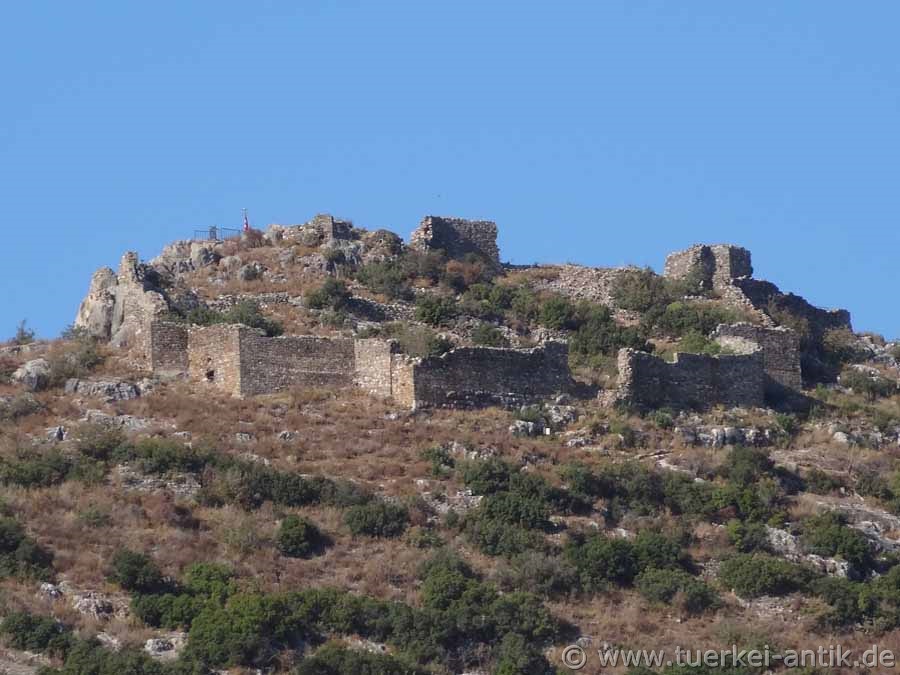 |
| Selinus Kalesi (Gazipaşa) | |||
 |
|
||
| Selinus Kalesi | |||
|
The relatively well preserved castle complex on the Acropolis of the ancient city of Selinus - today Gazipaşa - is a small Armenian fortress from the 12th century. It later served as a safe base for Italian traders. The castle complex was one of several fortifications built or extended by the small Armenian kings along the Cilician Mediterranean coast during the time of the Small Armenian Kingdom (1080-1375). The castle complex in Selinus around 1270 was the most western of their castles. The castle was built on the site of a Roman-Byzantine fortification. |
|||
|
|
|||
|
Little is known about the history of the city until Roman times. It was founded, according to ancient sources, in the 6th century BC by Phoenicians. Assyrian sources report of a sea trading town "Sallune" at this place. In 197 B.C. the area was conquered by Antiochos III and later passed into the hands of the Romans. On August 8, 117, the city of Selinus, now Gazipaşa, became the scene of world history. On this day the Roman Emperor Trajan died there after a serious illness on the way back to Rome. He came from a campaign in Mesopotamia against the Parthians. Hadrian, his nephew and successor on the imperial throne, gave the city the name "Trajanopolis" and had a magnificent cenotaph built in Selinus. |
|||
|
|
|||
|
Trajanopolis experienced a considerable upswing through financial donations from Rome to the city. During this time the Acropolis was also extended and the fortification, which had hardly been worth mentioning until then, was built. In the Byzantine period, when Selinus was the bishop's seat, the walls were renewed until the small Armenian kingdom took control of the area and had the castle extended. |
|||
|
|
|||
| Photos: @chim, Monika P. | |||
| Translation aid: www.DeepL.com/Translator | |||
| Source: Wikipedia and others | |||
|
|
|||

